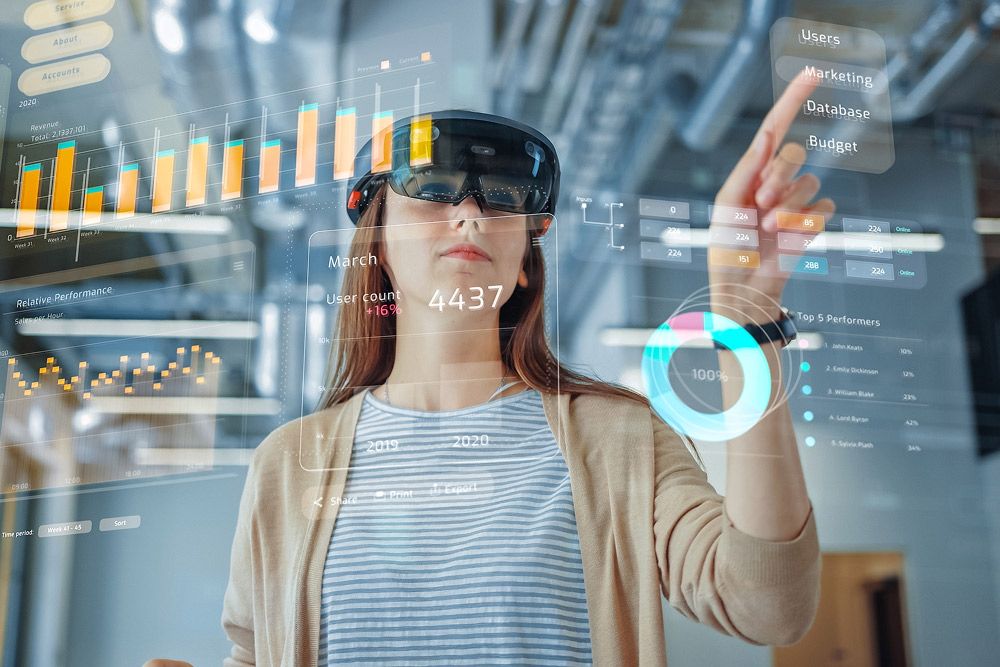Businesses are constantly on the lookout for new marketing strategies. The growth and spread of augmented reality (AR) technology presents a unique opportunity, allowing marketers to create more memorable user experiences, increase brand recognition, and foster deeper connections with their customers. In the competitive market landscape today, this may be what it takes to help brands stand out from the crowds and enhance the appeal of their products and services.
Ways to integrate AR into business marketing
AR has a wide range of uses, which means that it can be used in a myriad of ways for marketing, sales, and advertising campaigns.
AR games for stores
Physical stores offer a great place to carry out AR marketing efforts. From long waiting lines to general boredom, companies can tap into these settings to attract more attention to their products and services. This can be achieved by setting up stands or screens with QR codes that activate interactive AR-based games. Hide a small coupon code or discount code at the end of the page to excite more people, or lead them through a new or upcoming collection to generate brand awareness.
Virtual tours
In manufacturing settings, marketers can also use AR tools to offer virtual tours of the premises, the process, and/or the history of the brand. This can be especially useful for companies that offer visitors walking tours, as it helps increase user engagement and brand recall.
Interactive menu
Restaurants, hotels, salons, and many other establishments often have long menus with details regarding the services offered and their price points. These can be presented using AR technology to enhance user experience. For instance, in restaurants, AR tools can be used to showcase 3D models of dishes, allowing diners to have a better understanding of what it is, and potentially make way for faster ordering. This is sure to be a big step up from the current flat-view menus in use, and it offers a form of entertainment to patrons as their food is prepared.
Product packaging
One of the most impactful ways in which marketers can leverage AR technology is in product packaging. Small scannable codes on the original packaging can be used to unlock a host of different content, such as videos, recipes, and games. It can also be used to offer detailed user information and a guide for safety purposes.
World-building
AR tools can also be used to bring new worlds to life or allow users to build their own stories, create their characters, and direct scenes as they would like. This marketing strategy can work wonderfully when releasing new books, movies, or other creative content. Not only will this allow users to enjoy unique experiences, but it can also be used as popular feedback to incorporate into upcoming releases.
Virtual trials
Over the last few years, it has become increasingly common for customers to shop online. Marketers can use this knowledge to deliver AR tools directly to customers’ devices in the form of virtual trial rooms. Many popular retailers have already put this into practice, allowing users to “try” on clothes, make-up items, accessories, and even shoes, to help them find the right fit. A winning strategy to boost sales.
How to create an AR marketing campaign?
While the steps to integrate AR into marketing strategies can differ significantly on the business’s end goal, there are certain common practices to pay attention to.
Define goals and audience
Start by recognizing who the target audience is, and how tech-savvy they are. Next, narrow down objectives such as raising brand awareness, engagement, sales, etc.
Research all technologies
Check out the different platforms that allow AR usage to find out which best fits one’s current needs.
Design the experience
Based on the platform and goals, design the user experience. Popular examples include virtual try-ons, product demos, tutorials, and AR games. Integrate this with existing marketing channels, such as the website, social media, in-stores, etc.
Promote, track, and measure
Encourage other users to engage with these tools and track performance metrics, such as engagement and conversion rates and user feedback.
Optimize the experience
Leverage the above data and learnings to optimize the tool to perform better.
Benefits of using augmented reality for business
AR marketing isn’t just a buzzword. It’s here to stay, and here’s why.
Generates excitement
As with any marketing strategy, the main aim of AR marketing is also to generate buzz. But AR delivers more than traditional plans as it can be more personable and impactful. The engagement factor further adds to its appeal. Since it is still quite fresh in the user market today, it is also considered to be a novelty, making it that much more exciting.
Makes way for the efficient utilization of resources
AR tools can be a wonderful way of utilizing available space more effectively. Instead of having to print detailed menus, for instance, restaurants can simply place QR codes to scan and check out online menus—saving hundreds of dollars in printing and maintenance costs. Similar codes can also be used on visiting cards, leading users directly toward a business website, a career site, a portfolio, a blog, etc.
Additionally, AR can easily be integrated into existing resources to improve customer interactions, making it easier and more resource-efficient for businesses to implement.
Improves customer satisfaction
Customer engagement and satisfaction receive a massive boost with AR technology as well. Citing the example of virtual trial rooms once again, customers are less likely to return items that they tried on and liked—improving chances of their approval and positive feedback.
